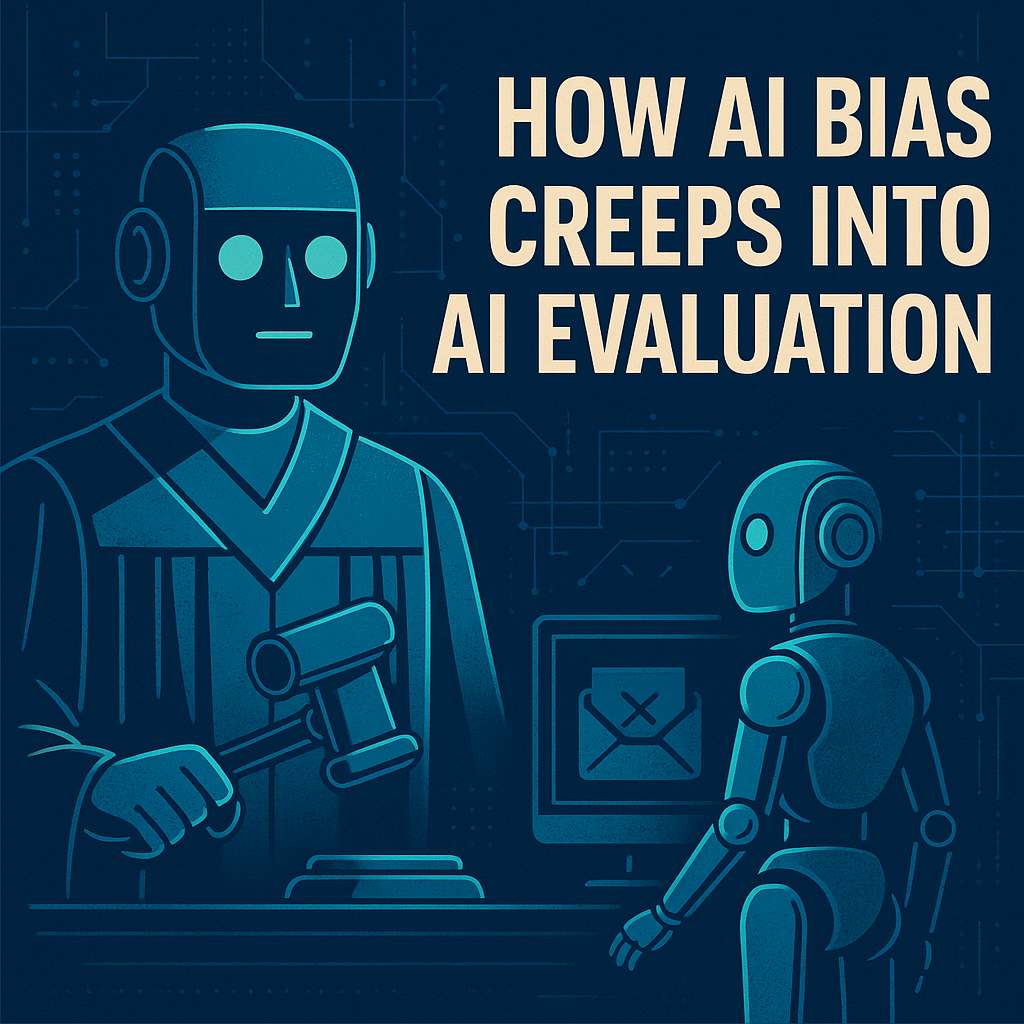Understanding Bias in LLM-as-a-Judge Systems
TL;DR: LLM-as-a-Judge systems can evaluate AI at scale, but they inherit biases like nepotism, verbosity, authority, positional, and beauty bias. These biases distort scoring and can inflate or hide hallucinations, reducing trust in automated evaluation. RagMetrics counters this with multi-judge scoring, calibration loops, and drift monitoring—achieving up to 95% human alignment and 10× faster evaluation for safer, audit-ready AI.
The Hidden Problem in AI Evaluation
Every developer building with GenAI has hit this moment: your evaluation pipeline says one model output is “better,” but your eyes disagree. The culprit is often bias—bias not in the generating model, but in the LLM acting as the judge.
LLM-as-a-Judge systems are now the backbone of modern AI evaluation frameworks. They’re faster, cheaper, and more consistent than human review—but they’re not immune to bias. As we automate evaluation, these hidden biases can distort benchmarks, skew model comparisons, and reward the wrong behaviors.
How Bias Creeps into AI Evaluation
Recent research is clear: judges aren’t neutral.
- A 2024 Stanford-led study, Judging the Judges, found that most LLM judges exhibit position bias—favoring the first response shown—even when it’s objectively worse (arXiv 2406.07791).
- Microsoft’s AI Playbook lists verbosity bias as one of the most common distortions—LLMs overrate longer, more elaborate answers, mistaking quantity for quality.
- Other studies note familiarity bias, where a judge gives higher marks to answers that “sound” like their own output style (arXiv 2405.01724).
Bias affects everything from model reliability to hallucination detection, especially when a single judge’s scores influence how your model is retrained or tuned.
Mitigating Bias in Judge Models
At Ragmetrics, we treat evaluator bias the same way we treat model drift: something to monitor, measure, and mitigate continuously. Key strategies include:
- Prompt Randomization: Swap the order of candidate answers so position bias can’t dominate.
- Judge Ensembles: Use multiple judges—general, domain-specific, and small calibration models—to compare judgments and flag disagreements.
- Calibration Testing: Periodically feed judges “trick” datasets designed to reveal hidden bias.
- Score Normalization: Post-process scores to offset verbosity or stylistic skew.
- Human-in-the-Loop Audits: When judges disagree beyond a tolerance threshold, route to human review.
Our LLM evaluation platform implements this with configurable tolerance settings, bias-risk overlays, and audit pipelines that feed calibration data back into the system.
Why Bias Matters Now
The explosion of LLM-as-a-Judge adoption across open-source and enterprise systems means we’re at an inflection point. If bias isn’t addressed early, it becomes systemic. Evaluation bias doesn’t just mislead your metrics—it can shape how your models behave in production.
To see how this same issue affects retrieval-based architectures, check out How to Evaluate RAG Accuracy Using LLM Judges.
For a deeper breakdown of how to build bias-resistant evaluation loops, access our resource page.
More From Blog
Validate LLM Responses and Accelerate Deployment
RagMetrics enables GenAI teams to validate agent responses, detect hallucinations, and speed up deployment through AI-powered QA and human-in-the-loop review.
Get Started









%201.svg)

